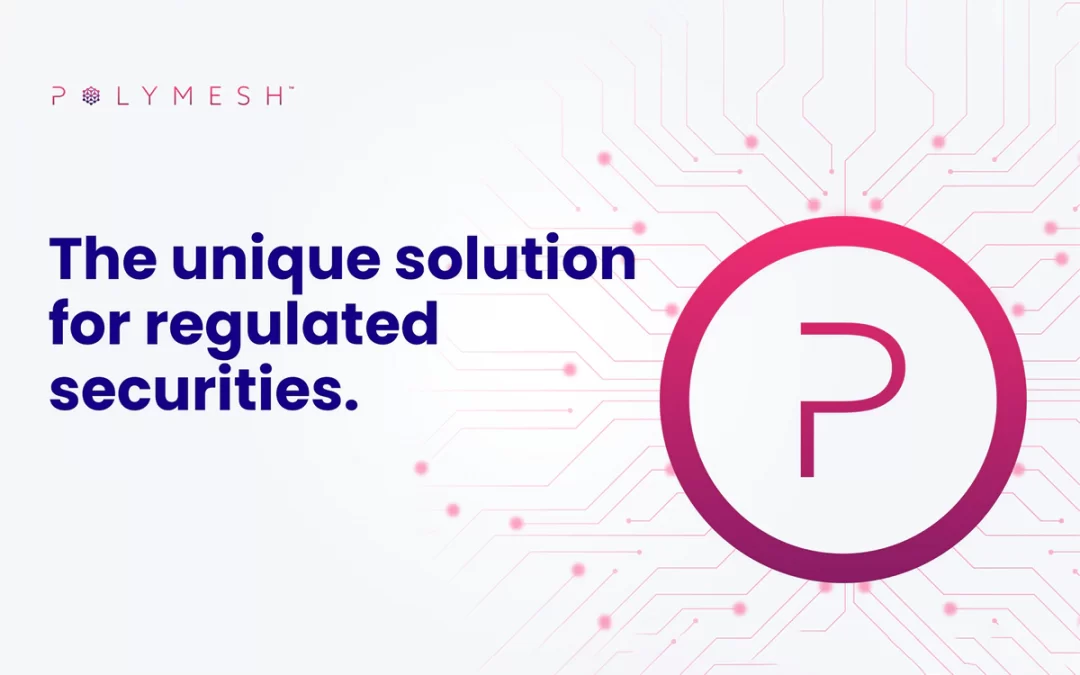Neither ERC20 nor ERC1400 is enough for today’s capital markets – but Polymesh offers a workaround.
Security tokens are on the rise. According to STOMarket.com, well over 100 tokens compete for attention from U.S. investors, with a combined market cap exceeding $1.1 billion. Such widely held names as Apple, Tesla and Google offer tokenized versions of their stock. But still, that could be an order-of-magnitude undercount.
“There are far more private and far fewer exchange-traded security tokens,” says Graeme Moore, head of tokenization for Polymath, a blockchain company that develops tools for digital securities. “The real figure is more like $5 billion to $10 billion.”
This poses a multibillion dollar problem that continues to grow exponentially: regulatory compliance. Because of regulatory requirements, not everyone who wants to raise capital in the U.S. can do so. Decentralized crypto exchanges are banned in the U.S., of course, but so are other financial instruments legal in other jurisdictions, like contracts for difference and off-exchange currency futures. That’s because know-your-client, anti-money laundering and other public policy requirements are at odds with blockchain’s pseudonymous nature.
So those who want to raise capital via crypto in the U.S. have the choice of a) waiting for Washington’s financial regulators and Wall Street’s self-regulators to catch up to the technology; b) finding a way to map the technology to the enforcers’ current requirements; or c) facing serious jail time.
Moore predicts most digital securities issuers will select the second option, which is why his company provides a purpose-built chain on a new standard that conforms to both technical and legal requirements.
Securing securities
Polymath is the company behind Polymesh, an institutional-grade permissioned blockchain built specifically for regulated assets. Moore calls it “the first of its kind, designed from the core to solve any blockchain-specific issues around compliance, risk and security for financial institutions.”
Polymesh has garnered the support of 14 major regulated financial institutions acting as permissioned node operators on the network, with its native token POLYX recognized as a utility token by the Swiss Financial Market Supervisory Authority (FINMA), suggesting it could be a compliance-focused blockchain with a use case that moves beyond crypto and into legacy securities.
Permissioned blockchains are, of course, nothing new. JPMorgan, Citigroup, Wells Fargo and dozens of other financial institutions already use them, and by all accounts, they function perfectly well as internal, proprietary distributed ledgers. But that doesn’t mean they can support securities that meet the U.S. Securities and Exchange Commission’s Howey Test. While stablecoins, utility tokens and true cryptocurrencies can make the case – successfully or not – that they’re not securities, security tokens are absolutely issued with that intention. There is no fig leaf. They are sold for the purpose of raising capital.
Most digital assets comply with ERC20, and while it remains a perfectly fine technical standard, it doesn’t fulfill the needs of the investor community. It has no transfer restrictions, and so regulators have no idea if an ERC20 token is being bought by a day trader in Tampa, a drug lord in Myanmar or a special operations force soldier in North Korea.
That’s why ERC1400 was developed: to promote regulatory compliance related to transfers, documentation, notification and fungibility. Unlike tokens minted under ERC20, an ERC1400 token can account for lockup periods, volume limits and reissues of lost or stolen assets. ERC1400 was purpose-built on Ethereum for security tokens, but it didn’t go as far as the U.S.-based investor community needed it to go. Polymesh took off from there.
Polymesh offers five advantages to issuers. These map to the five requirements Polymath believes must be met before capital markets participants adopt blockchain technology broadly:
- Governance: Polymesh is built using the Substrate Framework so that investors can rely on seamless upgrades without the disruption – and potential loss of value – from hard forks.
- Identity: Customer due diligence ensures all actors on the chain are verified. A single identity on the chain is created for each real-world individual or organization, and attestations can be attached to this identity as needed. This modular two-stage approach to identity verification allows for efficient onboarding as well as for checks required for specific assets.
- Compliance: Once the issuer sets preferences and restrictions, Polymath’s technology automates its enforcement efficiently – and cost effectively – at scale.
- Confidentiality: Because Polymesh is intended for securities, it makes it possible to transfer and hold assets confidentially, while still automating compliance checks and cap table updates.
- Settlement: Polymesh reduces delivery failure without requiring pre-funding and can provide deterministic transaction finality.
Future stock
Polymath expects Polymesh’s mainnet to go live in early November, following the formation of the Switzerland-based Polymesh Association, a not-for-profit promoting and developing the protocol and ecosystem. When it goes live, Polymesh will enable the creation of security tokens on purpose-built infrastructure for capital markets.
In a later release, confidentiality should be enhanced by MERCAT, a new patent-pending protocol for securely managing assets in a confidential and auditable way. MERCAT uses a hybrid design approach that combines zero-knowledge proofs with restrictions enforced by trusted mediators, giving issuers the option to make transactions while keeping their security token confidential.
While the market clearly exists already, Moore is braced for a major expansion. He predicts it will continue to grow in the short run due to the growth in the private placement market. Security tokens are already suited to debt and equity issuances governed by the Securities Exchange Act’s regulations A, D and CF. Polymesh’s cost efficiency would be a major driver, considering the level of expense startups now must bear for compliance.
“Going from $1 million [in origination costs down] to a hundred bucks – that’s a really big thing,” Moore says, adding that the future he sees for security tokens is even brighter, as major financial institutions realize the savings potential for their underwriting operations. “The banks will bring in the next $100 billion,” he says.














